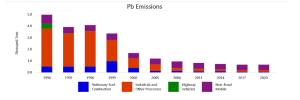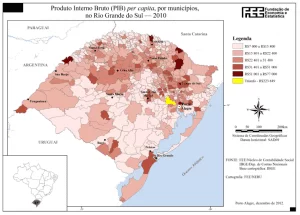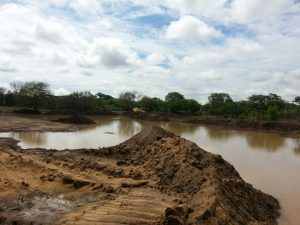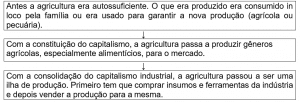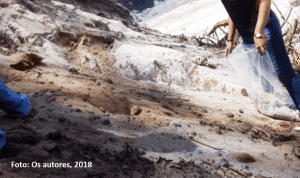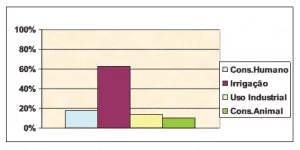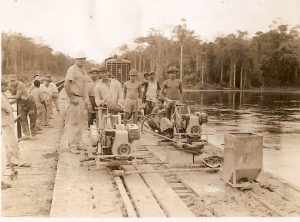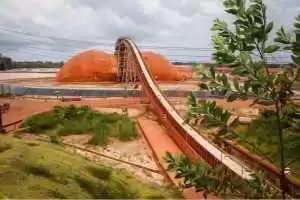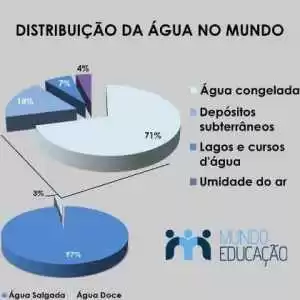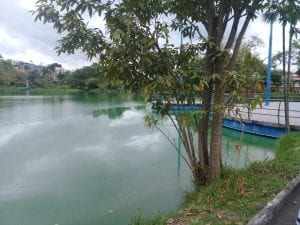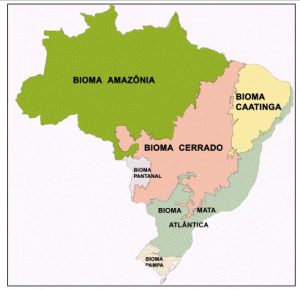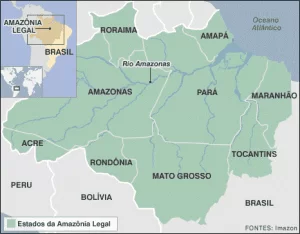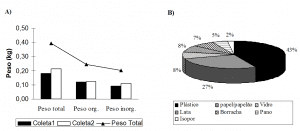BEDOYA, Sandra Patricia Oquendo [1], LOPES, Matheus de Oliveira [2], BRASIL, Ricardo [3], PRAT, Bernat Vinolas [4]
BEDOYA, Sandra Patricia Oquendo; et.al. Multi-criteria evaluation of environmental costs of three alternatives. Multidisciplinary Core scientific journal of knowledge. 03 year, Ed. 04, vol. 05, pp. 45-53, April 2018. ISSN:2448-0959
Summary
In the construction sector the use and management of natural resources for extraction of raw materials is of vital importance in relation to aspects of sustainability. The knowledge of the costs of each material employed, the environmental impacts from energy consumption and generation of carbon dioxide (CO2), allows the more sustainable decisions on the material and technique to be used for the construction. This study presents a comparative analysis through a multi-criteria assessment of three alternatives of wall between the alternative method of soil-cement and brick of the more traditional concrete block and brick ceramic. Via multi-criteria methodology were calculated for each wall type costs and CO2 and energy consumption in order to obtain a comparative standard in terms of monetary value and sustainability in order to choose the best alternative for a sustainable construction. Being that the wall built with the technique of soil-cement I happen to have the best results, showing if the alternative but economical and at the same time the more sustainable. The choice of materials used in the construction based on the economic and environmental impacts is an important basis in the choice of more sustainable decisions.
Key words: soil-cement, Brick, Building Sustainability.
Introduction
The current importance of building wake up with the vision of sustainability has implemented in construction projects economic, environmental and social criteria, so the choice of building materials has a significant weight on the impact environmental, factors such as the energy required for the production of material and CO2 emissions resulting from the manufacture of the materials are a relevant information on environmental impact analysis for the construction of any building. MONICH et al. (2010).
The choice of building materials is an important field of environmentally responsible engineering to obtain the current materials in the construction requires a lot of energy during the various stages (extraction, transport, processing, application, demolition and disposal or recycling), associated with the release of pollutants into the atmosphere in significant quantities MONICH et al. (2010). The result of this analysis, combined with the results of economic evaluation and stakeholder preferences, will allow the final decision about the material to use, SOARES, SOUZA and PEREIRA (2006).
[The extraction of raw materials of the construction industry, damage the landscape, natural habitats and ecosystems, irreversible damage, besides building materials require energy output for your production and can generate pollution in air, water or Earth during your extraction manufacturing use and final disposal, SATTLER (2000).
According to Soares et al. (2006), the construction industry exerts a significant impact on the economy of a nation and, therefore, small changes in the various phases of the construction process can promote, in addition to important changes in environmental efficiency and reduction of operating expenses from a work, greater incentive on investments in the sector
Considering the huge housing deficit and the search for clean, renewable materials and inexpensive in contrast to the industrialized, which often have high energy consumption and are centralizing in large cities, it is important to rescue the handmade construction technology as well as generate work and avoid the cost of transporting material, enables the integration of professional community volunteer projects. Within this perspective arises the ecological brick of soil-cement as a sustainable option for construction, the production of a soil-cement brick does not consume energy avoiding the generation of greenhouse gases, water consumption is less than in industrial production of bricks, being a method of high environmental benefits, and economic benefits as being a low-cost material that needs no brother of specialized labor or material transport, when the Earth is available on-site.
The soil is a material suitable for the most diverse applications in construction due to your abundance, ease of obtaining and handling and low cost, large (2003). The materials and construction elements based on earth are more sustainable for the Earth and abundant in any location and because the techniques used to construct these materials and constructive elements are usually simple, Myrtle (2010).
This research paper is inserted in the project: "development of healthy and sustainable Homes in rural communities". The aim of this study is to present a comparative analysis through a multi-criteria assessment of three alternatives of wall between the alternative method of soil-cement and brick of the more traditional concrete block and brick ceramic, for each type of wall were calculated the costs and CO2 and energy consumption in order to obtain a comparative standard in terms of monetary value and sustainability in order to choose the best alternative for sustainable construction.
Multi-criteria decision analysis (AMD), better known in Brazil as the decision support system, consists of a set of techniques to help an individual, group of persons or technical Committee or managers make decisions about a complex problem, evaluating and choosing alternatives to solve it according to different criteria and points of view. JANUZZI et al (2009)
Methodology
There are large number of methods that can be used in multi-criteria analysis, for this job if you use the multiatributo utility theory or MAUT-multiatribute utility theory, which is a discrete method (finite number of alternatives) that can assist integrated and objective assessments, this develops through stages ranging from the identification of alternatives, defining criteria and attributes, determination of weights of importance for each one, dimensionless values enabling transformation perform the comparison of different units to be evaluated and the best alternative analysis evaluated.
In order to obtain the best alternative of construction of the wall in terms of sustainability, the alternatives that will be assessed are:
- Alternative soil-cement brick
- Alternative concrete block
- Alternative ceramic brick
To perform the analysis of the three alternatives of wall were analyzed the economic and environmental criteria criteria chords with the triple of sustainability, for the economic and social criteria if evaluated cost aspects of inputs and BRO work respectively, in the case of environmental criterion assessed aspects of generations of CO2 and energy consumption of materials used in the construction of the wall. The criteria are represented in Figure 1.
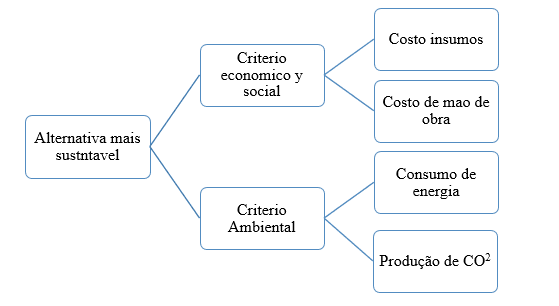
Economic and social criteria
For the construction of the wall module the three alternatives were designed with the same structural capacity (wind strength of 75 kg/m2), in Figure 2 are illustrated the different wall alternatives evaluated.
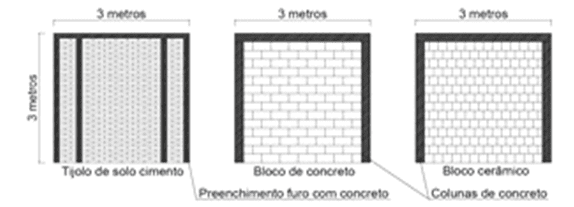
The first choice material used is the brick of soil-cement of dimensions: 25 cm x 12.5 cm x 6.25 cm. Four holes of the brick are filled with graute to perform the function of spine.
The second alternative use concrete block dimensions: 40 cm x 9 cm x 20 cm. The columns are located at the extremes (dimensions of 20 cm x 10 cm) and later a mortar of 1 cm to each side of the wall.
The third alternative is identical to the second with the only difference of the use of ceramic bricks with dimensions: 20 cm x 9 cm x 20 cm.
In the table 1. Boils down the result of quantification of the cost of labour and materials used in the construction of each alternative.
Table 1-Inputs and labor
| Alternative | Soil-cement | Concrete block | Ceramic block |
| Paragraph Blocks | 576 un. | 112 1. | 224 1. |
| Cement | 27.2 kg | 198.8 kgs | 236.7 kg |
| Rebar | 7.2 kg | 12.0 kg | 12.0 kg |
| Sand | 0.07 m3 | 0.26 m3 | 0.34 m3 |
| Brita | 0.01 m3 | 0.09 m3 | 0.09 m3 |
| Daily | 2.26 | 1.31 | 2.04 |
With the amount held in the table 1, if the total calculation of costs for the construction of the wall (CEF, 2015)
Table 2-total Costs for each alternative wall
| Alternative | Soil-Cement | Concrete Block | Ceramic block |
| Cost Inputs | 181.2 | 361.8 | 283.9 |
| Labor cost | 173.6 | 100.3 | 156.5 |
Environmental Criterion
To assess the sustainability of the energy studies employed are an important instrumental which enables you to determine the energy consumption throughout the construction process, calculating the power of teams and materials used, second (Fields 2003) the origin of materials or raw materials used in a building is one of the major factors that influence your energy cost.
Table 3-Total energy Calculation and generation of co2 for each choice of wall
| Alternative | Soil-Cement | Concrete Block | Ceramic block |
| Energy | 158 KW h | 473 KW h | 842 KW h |
| CO2 | 85.1 kg | 276.5 kg | 358.7 kg |
Results
With the total calculated for every criterion if settled the a function of value that allows you to transform the result (Q) in a dimensionless value, which will allow you to compare with the other criteria. Set a scale of usefulness where the criterion with rating closer to 1 will be to provide better performance and the criterion to obtain a result closer to the worst-case result presented 0; to establish the dimensionless value of each criterion if use the equation 1, tables 4 and 5 show the dimensionless values calculated for each criterion

Where:
Q: final result of the criterion
Q min: minimum possible result of the criterion
Q Max: result, as much as possible, the criterion
Table 4-dimensionless Value to economic criteria
| Alternative | Labor cost | Dimensionless value | Cost of inputs | Dimensionless value |
| Soil-cement | 173.6 | 0.24 | 181.2 | 0.88 |
| Concrete block | 100.3 | 0.91 | 361.8 | 0.15 |
| Ceramic block | 156.5 | 0.40 | 283.9 | 0.46 |
Environmental criterion
Due to the strategic importance that the construction sector has the range of sustainability, the study of the energy life cycle of materials becomes essential, after the Kyoto Protocol, commitments to more rigid character were enacted by signatory countries for the reduction of greenhouse gases. Therefore, the knowledge of energy and CO2 quantification in construction materials represents a relevant information as part of the analysis of the environmental impact caused by buildings. Monich C et.al (2010).
For the calculation of energy consumption was held an estimate of the energy involved in the construction of structures using energy coefficients built by the Institute of construction technology of Catalunya-IteC.
Table 5-dimensionless Values environmental criterion
| Alternative | Total energy consumption kwh | Dimensionless value | CO2 Generation Kg | Dimensionless value |
| Soil-cement | 158 | 0.99 | 85.1 | 0.97 |
| Concrete block | 473 | 0.54 | 276.5 | 0.38 |
| Ceramic block | 842 | 0.01 | 358.7 | 0.13 |
Final evaluation of the alternatives
With the total calculated for each criterion if settled the a function of value that allows you to transform the result in a dimensionless value, allowing you to compare all the criteria, the value function and set as a number from 0 to 1 where the value 1 represents the valuation maximum for an alternative and 0 means the valuation to minimal. Each value has the same weight of importance (33.3%). In table X is observed the calculations for all the criteria evaluated your respective dimensionless value
Table 6-final evaluation of the alternatives.
| Evaluation Criterion | Labor costs | Costs inputs | Production of
CO2 |
Power consumption | Total assessment |
| Soil-cement | 0.24 | 0.88 | 0.97 | 0.99 | 0.77 |
| Concrete block | 0.91 | 0.15 | 0.38 | 0.54 | 0.50 |
| Ceramic block | 0.40 | 0.46 | 0.13 | 0.01 | 0.25 |
CONCLUSIONS
Multi-criteria evaluation carried out for the three alternatives of walls made it possible to establish how the soil-cement brick wall as the constructive solution but sustainable, this alternative presents more satisfactory results in environmental terms and economical.
The multi-criteria method applied in this study allowed the assessment of economic and environmental criteria complying with the objective to define the wall more sustainable alternative
The knowledge of the energy involved in the construction of structures, as well as the co2 generation materials used, is an important basis in the choice of more sustainable decisions.
Assessments of the environmental impacts of the materials used for construction are a tool for the environmentally responsible choice of resources to be used in the projects.
The current importance of building wake up to this view has implemented in construction projects economic, environmental and social criteria, in this perspective the triple of sustainability arises the ecological brick of soil-cement as an option sustainable construction.
References
Bedec database. Available at:<http: itec.cat/noubedec.c/bedec.aspx=""> accessed on 25 mar.</http:> 2017
Caixa Econômica Federal. National Research System spreadsheet of costs and construction Indexes. 2015. Available at:< http://www.sinduscon-ba.com.br/conteudo/pub/003/cont/002025/002025.pdf=""> </> accessed on 18 Feb 2017.
CORREA. A. R. TEIXEIRA V. H.; LEE S. P.; OLIVEIRA. M. s. evaluation of the physical and mechanical properties of adobe (bricks of raw land). Lavras, v. 30, n. 3, p. 503-515, Jun 2006 available at: <http: www.scielo.br/scielo.php?script="sci_arttext&pid=S1413-70542006000300017&lng=en&nrm=iso">.</http:> Accessed on 25 July. 2017.
CORREA. J. R; Fields. A. T; CH B; RESENDE H; MILANEZ GASPARINO. And; E. S. . Energy cost of construction of an installation for the storage of hay. Cienc. Rural, Santa Maria, v. 33, n. 4, p. 667-672, Aug. 2003. Available at http://dx.doi.org/10.1590/S0103-84782003000400013. Accessed on 12 May. 2017.
GREAT. F. m. manufacture of modular soil cement bricks by pressing manual with and without addition of Silica fume. Defensa. Universidade de são Paulo, são Carlos School of Engineering Department of architecture and urban design 2003. Available at: <http: www.teses.usp.br/teses/disponiveis/18/18141/tde-07072003-160408/pt-br.php="">accessed on 10 Sep 2017</http:>
JANNUZZI. P. M.; MIRANDA. W. L; GARCIA. S. S. Multi-criteria analysis and decision making in public policy: methodological aspects, Operational Application and applications. Public information technology year 11 (1) 69-87, 2009 available at:<http://www.ip.pbh.gov.br/ANO11_N1_PDF/analise_multicriterio_e_tomada_de_decisao_em_Politicas_Publicas.pdf.></http://www.ip.pbh.gov.br/ANO11_N1_PDF/analise_multicriterio_e_tomada_de_decisao_em_Politicas_Publicas.pdf.> > 3 access August. 2017
MONICH. C. R; TABI s. f. energy and co2 embedded in the manufacture of building materials: current landscape in Brazil and abroad. XIII national meeting of built environment technology 2010, cinnamon RS available at: http://www.infohab.org.br/entac2014/2010/arquivos/636.pdf accessed February 2017.
MYRTLE. A. H; VARUM, YOU KNOW. J; PINTO. I. BENTES. A; P. L.r. Economic and Environmental Benefits of using natural structural materials in detached houses. Built environment, London, v. 10, n. 3, p. 07-22,/set.. 2010 available at:<http: seer.ufrgs.br/index.php/ambienteconstruido/article/view/12111/9714=""> accessed on 3 Feb.</http:> 2017.
SATTLER. M. a. evaluation of housing typologies from the characterization of environmental impacts related to construction materials. Defensa. Universidade Federal do Rio Grande do Sul. School of engineering. Graduate program in Civil Engineering. 2000. Available at: <http: www.lume.ufrgs.br/handle/10183/24834="">accessed on 10 Sep 2017.</http:>
Soares. S. R; SHANKAR D. M. PEREIRA S.W. The life cycle assessment in the context of the construction industry. Construction and Environment. Porto Alegre 2006. Available at: <http: www.habitare.org.br/arquivosconteudo/ct_7_cap4.pdf="">accessed on 13 sep.</http:> 2017
[1] Master in health and society and the environment from the Universidade federal dos Vales do Jequitinhonha and Mucuri (UFVJM), specialist in Environmental management from the University of Antioquia (Medellin-Colombia), with a degree in business administration in Health with enfases in management health and environmental science from the University of Antioquia (Medellin-Colombia)
[2] Forestry student at Universidade federal dos Vales do Jequitinhonha and Mucuri (UFVJM)
[3] Master in health and society and the environment from the Universidade federal dos Vales do Jequitinhonha and Mucuri (UFVJM), specialist in information technology governance at the Federal University of Lavras with a degree in computer science from the Pontifical Catholic University of Minas Gerais (2002). He is currently information technology technician of open education and the distance at Universidade Federal dos Vales do Jequitinhonha and Mucuri (UFVJM), Manager of information technology projects of the Jequi group and professor at Specialization in human rights education UFVJM.
[4] Doctorate in Civil Engineering from the Polytechnic University of Catalonia (Barcelona, Spain)-Construction Engineering Department. Degree in Civil Engineering from the Polytechnic University of Catalonia (Barcelona, Spain)
[5] The triple concept of sustainability, emerged in 1994 defines sustainable organisations such as enterprises financially viable, socially fair and environmentally responsible.

